If I’m being honest, finally meeting the Bardiya embroidery cooperative felt a little bit like meeting celebrities. I’ve heard so much about them, read about the time previous Peace Fellows spent together with them in years past, and seen the group’s storytelling embroidery blocks. While my motivations to pursue an AP Peace Fellowship were many, in a lot of ways, I flew to the other side of the globe to see this group. Unlike projects in Dang, this was an established community with their own history and character, and I was excited to witness it for myself.
I also found myself entering the scene at an interesting time for the group. At this point, it has been five years since the group formed, and many of the original members have taken a step back. Today, the group is composed of a friend group from the youngest generation of the initial cohort. To interpret this outcome, I think it’s important to think about the purpose of embroidery in this context.
This form of fiber art is special in that it facilitates storytelling using materials and processes that are more logistically and culturally accessible than other art forms like painting. And unlike painting, fiber arts have a communal nature to them; especially amongst women. These two qualities of embroidery, the communal nature and storytelling potential, are what made it so important to the Bardiya co-op.
The transition of members out of the embroidery side of the group is a sign that the storytelling and community-building goals were met. Embroidery acted as a facilitator. With time, the members who stayed on were interested in other aspects of embroidery work such as the income potential of this skillset, keeping up a hobby amongst friends, or the artist’s desire to refine their art form.
As another note on timing, it was an interesting time for a visit due to the agricultural calendar as well. Generally speaking, there are three geographic regions in Nepal – the mountains, the hills, and the Terai; lowland plains regions along southern Nepal and northern India. This area is a rich agricultural region and during the summer monsoon season planting has to be timed just right around the rains.
When Prabal and I first arrived in Bardiya we commented on how dry the rice paddies looked. There was also a noted difference between paddies that were connected to groundwater irrigation systems, noticeable because they were planted first, and ones that relied purely on the rainwater. Within just a week’s time we witnessed a flurry of action in the fields as everyone took advantage of the rains.
In both Bardiya and Dang, both districts in the Terai, it’s an all hands on deck affair as whole families spend the early hours of the morning before it gets too hot pushing rice plant sprouts into the mud in neat upright rows with incredible speed. Families rely on this process for their own personal subsistence farming if they have access to their own land, or as sharecroppers planting a landlord’s fields. Either way, it is of essential importance to the household.
We scheduled our time together so as to not interfere with the Bardiya group’s planting responsibilities. During that first get-together I met Kushma, Kanchan, Geeta, and Binita for the first time. I enjoyed watching the dynamics between these friends. They joked with Binita for joining us when she hadn’t made any embroidery blocks herself, and teasingly accused her of just wanting to hang out. They told the story of how Alina, another younger member like themselves from the cooperative, was being coy about the boy she was seeing and would later marry. Lots of laughs ensued. Following up on that story, they shared some photos of Alina from her wedding ceremony.
The easygoing comradery amongst the group makes it easy to forget that these women who met as girls are bonded to one another through friendship, yes, but also through their shared loss and the trauma their families experienced through the forced disappearance of a relative. Unlike the older members from the original cooperative, the younger members who get married move away from their birth family to live with their husband’s family which disperses the cooperative members geographically. But despite the inevitable physical distance between them, there’s a sense that the bond between them remains unbroken.
Prabal and I showed the group the embroidery supplies we bought in Kathmandu for the training in Dang. The assessment of each item was thorough. The punch needles received particular attention as the needles couldn’t be bent or broken, and extras would be needed since first-timers at the Dang training are likely to break a few needles here and there.
I brought some AP catalogs of quilting projects in Africa, and it was interesting to see the intensity the review of the photographed embroidery received. I had spent so much time thinking about the role of embroidery in bringing together this group in Bardiya, but those catalogs showed how embroidery was a common denominator amongst women around the world.
As we got on our way to go to Neeta’s house to visit with her, Kanchan wanted me to try out her bicycle. A mix of biking and walking later, we reached an auto rickshaw driver who would take us to Neeta’s. Since he was going to drive us back as well, the rickshaw driver ended up sticking around in Neeta’s neighborhood. Neeta shared some delicious mangos with us from the tree growing behind her house, and although the rickshaw driver tried to politely refuse the mangos, we all joked that he was another guest at this point.
Without any probing or questioning at all, Neeta’s mother shared the story of her son’s disappearance. It was as if any home tour necessitates the retelling, as she began sharing by pointing to the houses where each of her surviving sons now live and the house where her lost son used to live. It was a natural element of the surroundings. It was the house from which the army took her 18 year old child and the house to which he never returned.
At Neeta’s home and while walking through the neighborhood, it was exciting to recognize sights of Tharu daily life that I had seen in stitched form in previous embroidery squares from the Bardiya cooperative. The cooperative’s first forays into embroidery commemorated their personal loss during Nepal’s armed conflict, but those losses were also intertwined with the families’ identities as Tharu community members. The Bardiya district was most impacted by forced disappearances, and the majority of those disappeared were Tharu.
Upon later reflection, I think spending time with the training participants in Dang helped me understand the Bardiya cooperative members better and spending time with the Bardiya cooperative members helped me to understand the training participants in Dang better. A big theme in that process was the role of Tharu cultural identity in community building. Beyond ethnic identity, I felt working with both groups also highlighted the importance of developing one’s voice and the power that individuals, especially women, have in directing how they personally understand and translate empowerment into their lived experience.
But before I could make those observations, we had to pull off the first ever storytelling embroidery training organized between AP, NEFAD, and BASE. Onward to the Dang district!
Posted By Therese McCarry
Posted Jun 25th, 2022

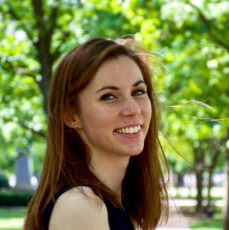
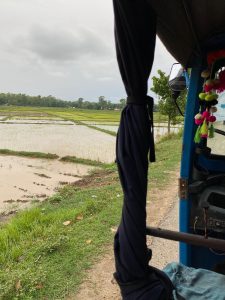
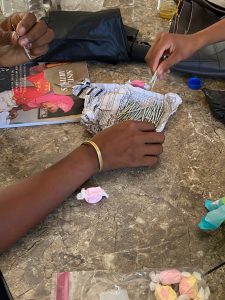
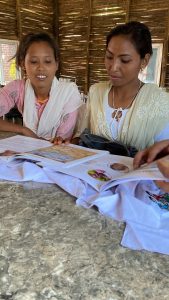
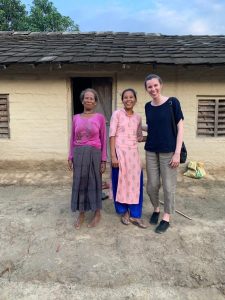
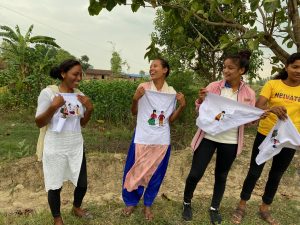
1 Comment
Iain Guest
July 10, 2022
Really nice, rich account of a very special group of young women, Therese! As you point out, several AP staff members and former Peace Fellows have visited the Bardiya cooperative and basked in the friendship of Kushma and her group! We’re so grateful to you for getting the relationship back on track after such a difficult period. I love the way you’ve woven in the different themes, good and bad. You’ve really nailed the embroidery side of it and you are so right to focus on the importance of doing embroidery together. Your description of their friendship and the way they tease each other is priceless! But then there is the sad fact of the disappearances, which hangs over everything. I read this and conclude that they’ve got you under their spell which is the way it should be!! Keep up the great work!